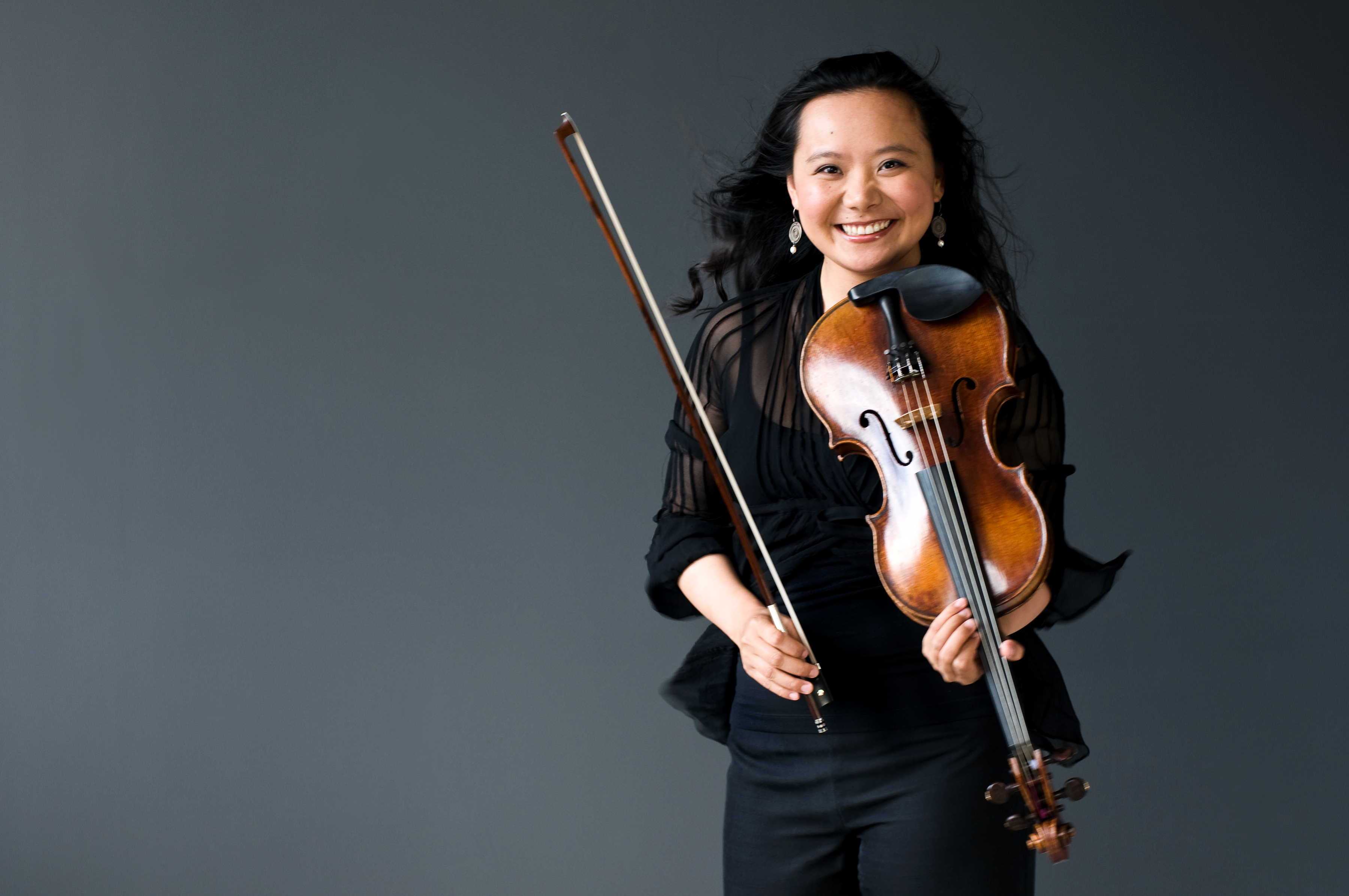|
Back
An evening of vivid contrasts Toronto
Koerner Hall
02/26/2012 -
John Rea: Zefiro Torna
Claude Vivier: Wo bist du, Licht!
Giacinto Scelsi: Ohoi (I principi creativi)
Alfred Schnittke: Concerto for Viola and Orchestra
Krisztina Szabò (Mezzo-soprano), Teng Li (Viola)
The Esprit Orchestra, Alex Pauk (Conductor)

T. Li (© Bo Huang)
The program began with John Rea’s Zefiro Torna, a work commissioned by Esprit in 1994. (The orchestra is always presenting new music but has a welcome policy of revisiting “old” repertoire.) The title is taken from a sonnet by Petrarch (number 310) set by Claudio Monteverdi as a five-voice madrigal in his Sixth Book of Madrigals. The Monteverdi work is not clearly identifiable (as, for example, the early works quoted and built upon in Lukas Foss’s Baroque Variations). Instead, as the composer’s note explains, it “becomes...a kind of cantus firmus’ underlying the ten-minute work. The poem contrasts the beautiful coming of spring with the author’s grief at the death of his beloved (not named, but we know it was the perfect and unattainable Laura).
Rea’s work begins subliminally with distant percussion. Tension builds and toward the end are sounds like the gentle tolling of funeral bells, then spring returns...
A startling contrast to this work was Claude Vivier’s Wo bist du, Licht! (“Light, where are you?”), dating from 1981, just two years before the composer’s untimely death at age 34. A mezzo-soprano (Krisztina Szabò) intones words from a poem, "Der blinde Sänger" (“The Blind Singer”) by Friedrich Hölderlin, while a tape plays, in order, excerpts from Martin Luther King, Jr.’s “I have a dream” speech, then a news report of the assassination of Robert F. Kennedy, followed by a solemn male voice reciting the poem, followed by a Vietnamese woman speaking about torture. The second and fourth of the recorded sections really didn’t come across. Ms Szabò, displaying her customary sense of intelligent involvement with the work, recites/sings certain words from the poem along with syllables from a language invented by the composer. She really has to pay close attention to both her score and the conductor which brings a sense of constraint to the performance (perhaps on purpose?) - I cannot imagine a performer being able to memorize such an extensive stretch of non-melodic music composed to mostly random syllables, especially for a single performance. The poignant poem is about a blind man recalling the sights he used to enjoy; the quatrains selected (numbers four to nine) do not contain the phrase “Wo bist du, Licht”.
Vivier had studied at the Institute for Sonology in Utrecht and then while in Paris encountered the spectralist group of composers, people trying to recreate a basic, radical redefinition of music based on tone. This 25-minute work starts off with a minimalist grinding tone accompanied by distant drum taps, but soon morphs into something definitely non-minimalist, with Asian-sounding cymbal clashes and a host of effects. Comments in the program suggest it is a plea for enlightenment and/or a meditation on human sorrow. It might be better understood in relation to other works by Vivier in what was a very creative period in his life.
The second part of the program opened with Ohoi (I principi creativi) by Italian composer Giancinto Scelsi. He lived from 1905 to 1988 - in other words through periods of great historical and musical flux, and his musical output reflects this. OHOI was composed in 1966, during the third of his four musical periods when he was absorbed in what is now called microtonality. The five-minute piece for sixteen strings simply presents evolving harmonics beginning in the low strings with a tremolo between low D-sharp and E and then ascending gradually, without rhythmic pulse, into the higher strings. It has a cleansing of the aural palate effect.
The final work of the evening was Alfred Schnittke’s Concerto for Viola and Orchestra, composed in 1985 for the Russian violist Yuri Bashmet. It contains a central motif of six notes that spell Bashmet’s name if you use a combination of French and German notation (much as what Dmitri Shostakovitch did in several works). The concerto is 30 minutes long (three movements: Largo - Allegro Molto - Largo) and the violist rarely gets even a short pause. The orchestra is large (although violins are dispensed with) and includes piano, harpsichord and celeste. It amounts to a sort of confrontation between soloist and orchestra, especially with the stage set-up employed. Teng Li stood on one half of the stage in front of the keyboard instruments while the rest of the players were on the other side of the stage. I don’t know if this set-up is part of the composer’s design for the piece, but it certainly works. There is a call-and-response element to the concerto, with the viola sending a message and the orchestra responding - however the music is in a constant process of destabilizing itself as new musical identities emerge or erupt. The program notes contain the phrase “a swirling mix of styles”, which is especially true of the frenzied second movement.
The lengthy final movement contains a cadenza-like solo for the violist followed by a what sounds tragically like resignation or even entropy. This performance was an absolute triumph for the stalwart Teng Li (she became lead violist of the Toronto Symphony Orchestra at age 21 in 2004) and gave strong evidence for the growing reputation of Schnittke among composers of the last century. The piece also offered yet another contrast to this program, with Schnittke’s “polystylism” following Scelsi’s microtonality.
Michael Johnson
|